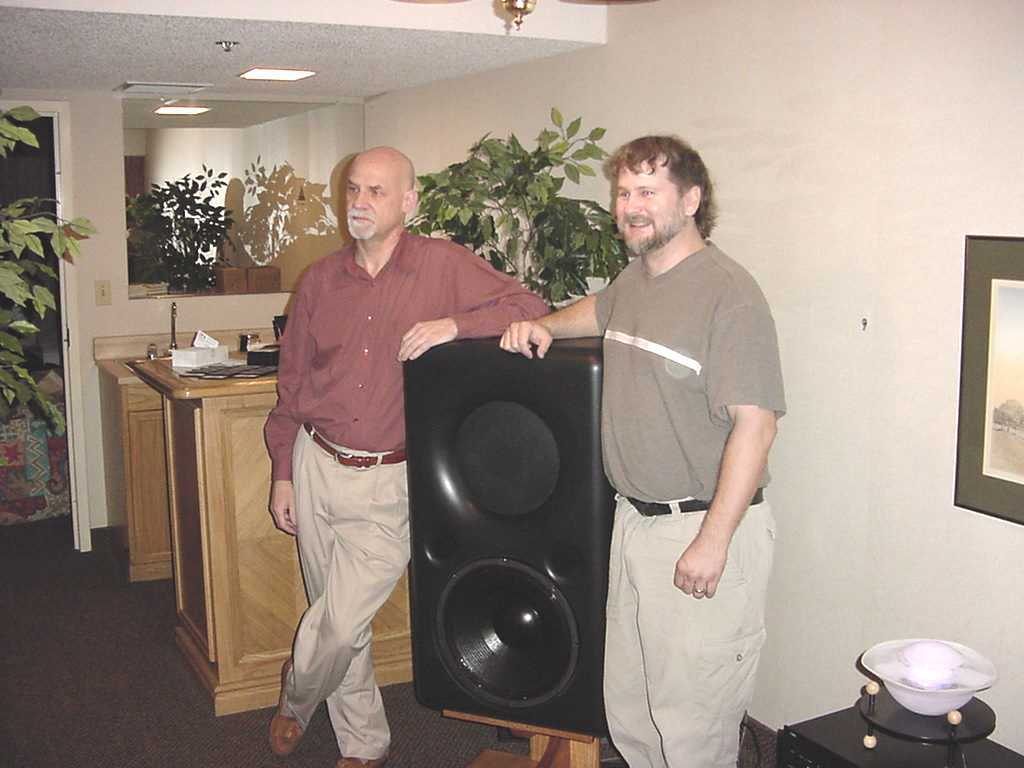mige0 said:
And for me – its way better (more clear) to say the *diffraction* is what have to make up for the difference (in change of the wave front shape = main mode) than to say the HOM is what has to make up for the difference
Michael
Michael
Whatever makes the concepts clear is fine, as long as that clarity is correct. It is no help to think something is clearer if it is incorrect.
So to be precise, the OS is fed with a plane wave and this plane wave is bent into a spherical wave. This bending in and of itself does not result in diffraction - thats a key point that you seem to be missing. There is a given amount of bending of the wavefront that is allowed without diffraction. Any deviation of the walls from this "allowed" contour of minimum diffraction wil create HOM waves to "make up the difference". Diffraction is the cause, the HOM are the result. But it is incorrect to think that all wavefront curvature creates diffraction and hence HOM. In practice, it would not be feasible to create the conditions under which absolutely NO dffraction would occur, but it could be done. The point is simply that curvature does not mean diffraction and HOM, its not that simple.
There are waves and there are things that happen to waves, you are confusing the two things. Diffraction, reflection, delay and interference are things that happen to waves, but none of them are the waves themselves. HOM are waves, diffraction is an effect on those waves - different things.
In any analysis it is possible to break a wavefront down in terms of an infinite set of plane waves, this is precisely what is done in Optics in "K-Space". So the motion of a wavefront in any duct could be done as a sum of plane waves, or it could also be done as a sum of spherical waves - this is BEM. But these techniques obscure what is happening precisely since any wavefront requires an infinite number of waves to define. Better, in a known waveguide contour, is to solve for the set of allowable wavefronts which then requires only one or two or at most a hlf dozen waves to be defined. This later set is precisely what the OS waveguide solves for. That minimum set of waves that can exactly define any wavefront allowed in a waveguide. This set is important because it inherently seperates the main wave from the HOM which are dispersive and allows for us to maximize the main one and minimize the unwanted HOM waves. No other technique allows for this simplification.
Off Topic
Earl - I was going back through the archives to find the photos of you and Duke from GPAF 2005. Wanted to post one on the HOM measurement thread. Thought I'd post here too, sort of memory lane. 🙂

Earl - I was going back through the archives to find the photos of you and Duke from GPAF 2005. Wanted to post one on the HOM measurement thread. Thought I'd post here too, sort of memory lane. 🙂
- Geddes and AudioKinesis at GPAF 2005

Waitaminnit....
Vented? VENTED?!
what happened to sealed with multiple bandpass subs for <100Hz?
🙂
Vented? VENTED?!
what happened to sealed with multiple bandpass subs for <100Hz?
🙂
Dr. Geddes said sealed was easier to integrate with the subs and easier to build...or that the extra bottom end ported provided wasn't really needed b/c of the multiple subs.
I think....
I think....
winslow said:Dr. Geddes said sealed was easier to integrate with the subs and easier to build...or that the extra bottom end ported provided wasn't really needed b/c of the multiple subs.
I think....
Thats correct.
One of my Summas is still ported. I sealed the ports on the other two.
Little bit off topic I know and maybe the more scientific of you aqlready know about it but I'll mention it anyway. I came across a program called Open DX at opendx.org. It is I believe for illustrating collected data in graphic form. I understand it is free and open source but it is way over my head. This seemed an appropriate thread to mention it in as it may be of some use.
jamikl
jamikl
Earl,
Do you know if the new coaxials of B&C have an OS waveguide?
http://www.bcspeakers.com/product.php?id=0000000167
http://www.bcspeakers.com/product.php?id=0000000168
Do you know if the new coaxials of B&C have an OS waveguide?
http://www.bcspeakers.com/product.php?id=0000000167
http://www.bcspeakers.com/product.php?id=0000000168
sbe4kdr said:Earl,
Do you know if the new coaxials of B&C have an OS waveguide?
No, I have no idea.
Hello,
Thanks for the tip. I looked at the image gallery
http://www.research.ibm.com/dx/imageGallery/index.html
and it looks very beautiful.
Need to dig more into this..
- Eloas
Thanks for the tip. I looked at the image gallery
http://www.research.ibm.com/dx/imageGallery/index.html
and it looks very beautiful.
Need to dig more into this..
- Eloas
jamikl said:Little bit off topic I know and maybe the more scientific of you aqlready know about it but I'll mention it anyway. I came across a program called Open DX at opendx.org. It is I believe for illustrating collected data in graphic form. I understand it is free and open source but it is way over my head. This seemed an appropriate thread to mention it in as it may be of some use.
jamikl
This all quite off topic and I don't want to go on and on about it, but I can't get any of the links for downloading the Visualization software to work. Has anyone else had success?
http://web.archive.org/web/20070305161403/opendx.sdsc.edu/bin/
And of little use unless you're a unix guy, using windows only as a bandaid...
And of little use unless you're a unix guy, using windows only as a bandaid...
Agreed - seems its not aimed at Windows users. Thats Ok there are plenty of windows plotting packages that appear to be comparable. Thanks
OS throat mold

This mold is made from polycarbonate sheet. It will be fiber glassed.
The center section is a one-piece glue up. The two disks are removable. The small disk will form the flange for the driver mount. The large disk will form a flange for mounting the remainder of the guide, which will be made from wood.
The holes for driver mounting will be blanked out by screws covered with rubber tubing.


This mold is made from polycarbonate sheet. It will be fiber glassed.
The center section is a one-piece glue up. The two disks are removable. The small disk will form the flange for the driver mount. The large disk will form a flange for mounting the remainder of the guide, which will be made from wood.
The holes for driver mounting will be blanked out by screws covered with rubber tubing.

Returning for a moment to the Makarski paper - are we certain that his reference to the "internal membrane" is meant to be the driver's diaphragm and not to a "virtual" membrane of the intitial or subsequently occuring plane or spherical wavefront?
I found the reference to be unclear in the text.
_-_-bear
I found the reference to be unclear in the text.
_-_-bear
gedlee said:.... So to be precise, the OS is fed with a plane wave and this plane wave is bent into a spherical wave. This bending in and of itself does not result in diffraction - thats a key point that you seem to be missing. There is a given amount of bending of the wavefront that is allowed without diffraction. Any deviation of the walls from this "allowed" contour of minimum diffraction wil create HOM waves to "make up the difference". Diffraction is the cause, the HOM are the result. But it is incorrect to think that all wavefront curvature creates diffraction and hence HOM. In practice, it would not be feasible to create the conditions under which absolutely NO dffraction would occur, but it could be done. The point is simply that curvature does not mean diffraction and HOM, its not that simple. ....
I have thought that diffraction occurs everytime when the wavefront is bended because of change in curvate of border. The above let me think that OS is a minimum diffraction device for plane wave, but if fed with "more appropriate" wavefront no diffraction occur at all. Can you confirm my understanding?
- Home
- Loudspeakers
- Multi-Way
- Geddes on Waveguides